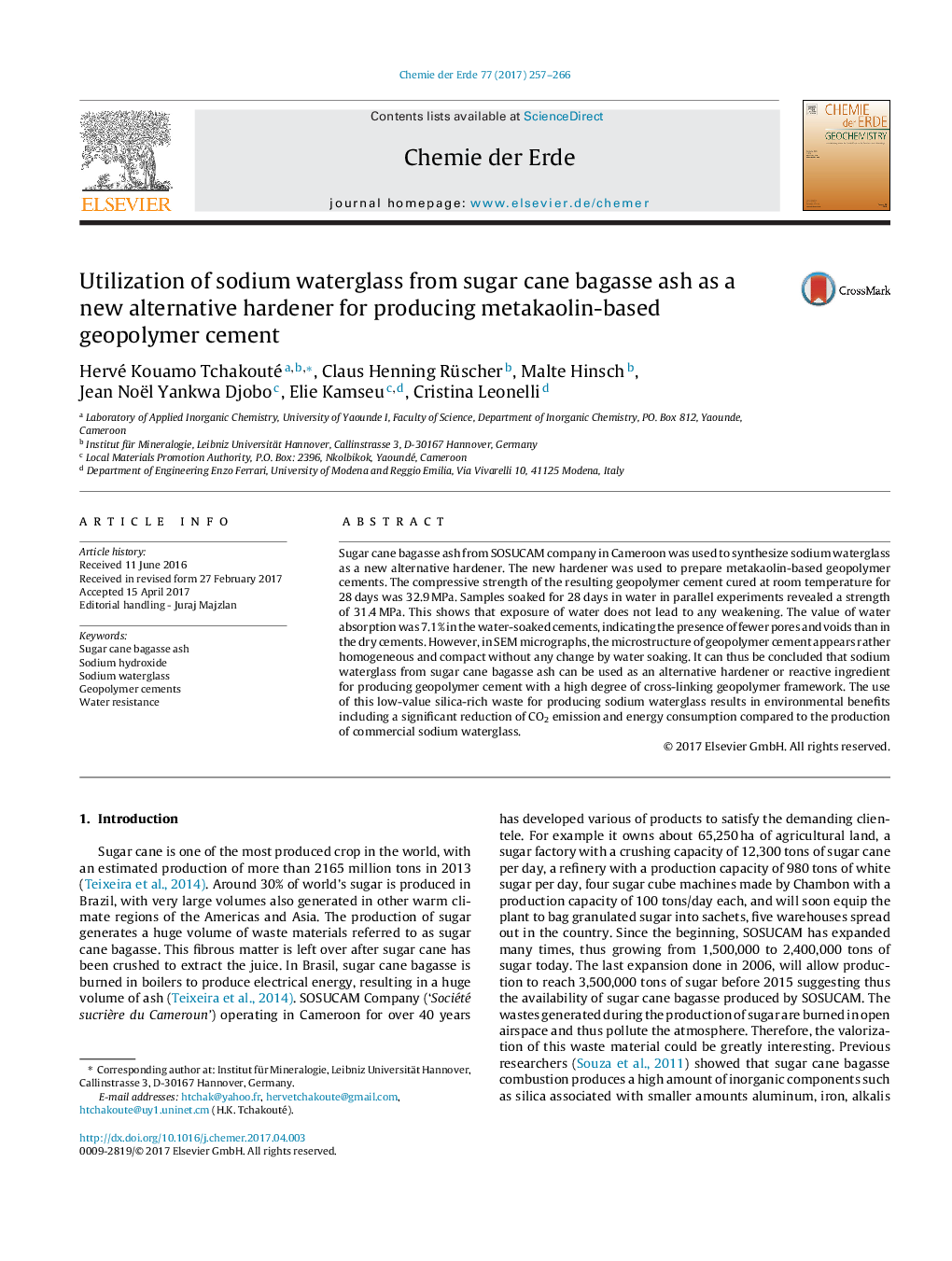| Article ID | Journal | Published Year | Pages | File Type |
|---|---|---|---|---|
| 5745609 | Chemie der Erde - Geochemistry | 2017 | 10 Pages |
Sugar cane bagasse ash from SOSUCAM company in Cameroon was used to synthesize sodium waterglass as a new alternative hardener. The new hardener was used to prepare metakaolin-based geopolymer cements. The compressive strength of the resulting geopolymer cement cured at room temperature for 28Â days was 32.9Â MPa. Samples soaked for 28 days in water in parallel experiments revealed a strength of 31.4Â MPa. This shows that exposure of water does not lead to any weakening. The value of water absorption was 7.1% in the water-soaked cements, indicating the presence of fewer pores and voids than in the dry cements. However, in SEM micrographs, the microstructure of geopolymer cement appears rather homogeneous and compact without any change by water soaking. It can thus be concluded that sodium waterglass from sugar cane bagasse ash can be used as an alternative hardener or reactive ingredient for producing geopolymer cement with a high degree of cross-linking geopolymer framework. The use of this low-value silica-rich waste for producing sodium waterglass results in environmental benefits including a significant reduction of CO2 emission and energy consumption compared to the production of commercial sodium waterglass.
